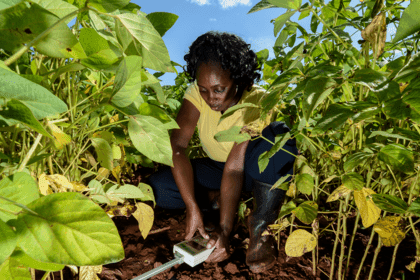
Landscape mapping of software tools for climate-sensitive infectious disease modelling
Understanding how climate change will impact infectious disease epidemiology, and thus when and where the next outbreak of an infectious disease is likely to occur, is invaluable to public health preparedness. One way of doing this is through modelling.
This report identifies what software tools exist for modelling the relationship between climate and infectious diseases and describes the challenges that have prevented more accessible tools from being developed.
What’s inside
- A literature review of existing software tools at the intersection between climate and infectious disease.
- The identification of current gaps that could be addressed by software-based tools, through interviews with global experts from research and policy communities.
- Recommendations for how funders could fill gaps identified and support the field more generally.
Who this is for
- Researchers interested in climate-sensitive infectious diseases
- Potential users of climate-sensitive infectious disease models, like policy makers
- Other funders supporting research in this field.
Key findings
Increasingly we are seeing how weather patterns and longer-term climate trends can impact the rate and spread of infectious diseases. Because of this, models that incorporate environmental predictions are in high demand.
However, there are some key barriers that make it difficult for policy makers to use these models. For example, a health policy maker may not have the technical expertise to use a model or understand its outputs. Additionally, a model may produce information that doesn’t fit the needs of the policy maker.
This report is Wellcome’s first step in identifying and addressing the technology gaps that undermine global climate-sensitive infectious disease preparedness. The findings include:
- in papers published over the past 10 years only 37 fully developed and named tools were found. This suggests that either the ecosystem of modelling tools is under invested in and/or that there are few incentives for high-quality curation of code.
- 81.1% of the identified tools are for vector-borne disease systems. There is a shortage of tools for respiratory, foodborne, and waterborne diseases.
- North American and European institutions created the majority of tools, highlighting the need for greater global representation.
- there are several key barriers to tool implementation, including a lack of effective communication between modellers and decision makers, that need to be addressed.
For an interactive executive summary of these key findings, and others, as well as a curated list of the 37 identified tools, visit the Tools for Climate-sensitive Diseases website.
Downloads
Contact us
For more information, contact Bilal Mateen, Clinical Technology Lead, at B.Mateen@wellcome.org or Madeleine Thomson, Head of Climate Impacts, at M.Thomson@wellcome.org.
